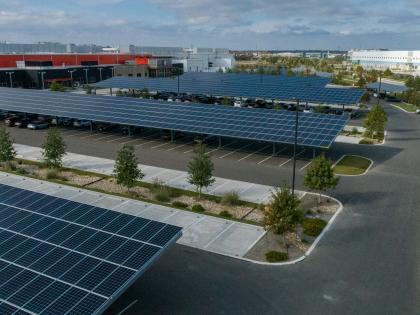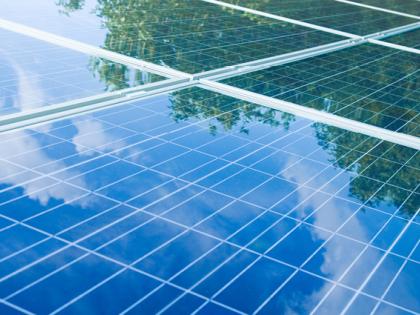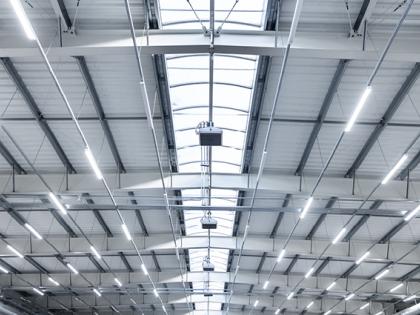Financing Sustainable Real Estate Through Sale-leasebacks
Businesses can leverage this innovative financing tool for solar, sustainable development and energy-efficiency upgrades
Financing sustainable building upgrades can be a daunting and expensive endeavor for many businesses. The upfront costs associated with sustainable materials, energy-efficient systems and eco-friendly designs often deter companies from pursuing these environmentally beneficial projects, even when they know there are long-term cost savings.
Sale-leasebacks offer an effective solution to this challenge. By selling their real estate to an investor and leasing it back, companies can unlock capital which they can invest in sustainability upgrades, improving the quality of their building and often lowering operating costs. Landlords, like W. P. Carey, are also typically supportive of sustainability-focused building upgrades as they increase the overall value of the building.
Here are several ways companies can leverage sale-leaseback financing to make their buildings more sustainable.
Solar panel installations and green roofs
One of the most effective sustainable upgrades for commercial facilities is installing solar panels on a roof or carport. Solar panels provide a clean source of energy and can help companies save on power costs. They also reduce over-reliance on the grid during peak periods when electricity demand is high and clean up the grid, providing a renewable and cost-effective alternative to fossil fuels. Depending on the location, companies may also be able to receive Renewable Energy Credits (RECs) or Guarantees of Origin (GOs).
Another sustainable upgrade that can provide both environmental and economic benefits is a green roof, also known as vegetated or living roof. These are roof systems covered with waterproofing membrane, soil and vegetation. Green roofs can significantly improve stormwater management, reduce urban heat island effect, boost biodiversity by providing a habitat for plants and animals, and improve building energy efficiency.
Both solar panels and green roofs are a great way to make a building more sustainable and help reduce energy costs for the tenant, but they require significant investment. By utilizing sale-leaseback financing, companies can easily unlock the capital they need to invest in these improvements.
Sustainable construction
For companies who are looking for a brand-new building and want to prioritize sustainability, a build-to-suit, which uses the sale-leaseback structure, is a great solution. Through a build-to-suit, a company can secure a custom-built, sustainable facility without the upfront capital investment. An investor funds and manages the construction of the new facility to meet the specifications of the future tenant, and upon completion, the company enters into a long-term lease.
During the build-to-suit planning, companies can specify that they want to utilize sustainable construction, which means using recyclable and renewable materials during the building process as well as minimizing energy consumption and waste production. In addition, the building can be designed to minimize its carbon footprint by incorporating elements and materials that have a continuous positive influence on the environment. These features can include electric-vehicle charging stations, drought-resistant landscaping, heat pumps, appropriate insulation to prevent heat loss and greywater recycling.
Energy-efficiency upgrades
Implementing sustainable features to improve energy efficiency significantly impacts a property's life-cycle emissions. These upgrades are often relatively easy to implement but can be costly to install. By unlocking capital through a sale-leaseback, companies can extract the cash they need to invest in these improvements, making their building more sustainable and saving on energy costs in the long run.
One example of an energy-efficiency upgrade is installing Internet of Things (IoT) technology, including smart meters, which help companies manage building efficiency on a daily basis. IoT sensors can gather information on energy consumption, temperature, air quality and occupancy levels, enabling tenants to best optimize the efficiency of their buildings.
Companies can also leverage the capital from a sale-leaseback for building systems upgrades. Upgrading an outdated heating, ventilation and air conditioning (HVAC) system can help decrease utility consumption and create maintenance cost savings for the tenant.
W. P. Carey can help
While the financial burden of sustainable building upgrades can be substantial, sale-leasebacks provide a viable and strategic solution. Embracing this approach allows companies to align their environmental goals with their economic objectives, paving the way for a greener and more prosperous future.
W. P. Carey is one of the largest net lease real estate investors and has significant experience working with companies on sale-leasebacks and sustainability solutions. If you’re interested in learning more, contact us today!

Related Topics:
You May Also Like:

Tenant Partnerships – The Road to a Sustainable Future
As Climate Week NYC approaches, the spotlight on sustainability is brighter than ever. For companies across industries, the annual event underscores the urgent need to address climate change. The real...
Going Green for Earth Day
Real estate is one of the biggest CO2 emitters, with buildings accounting for 30-34% of global energy consumption. This makes it a critical sector in the global effort to reduce carbon emissions...